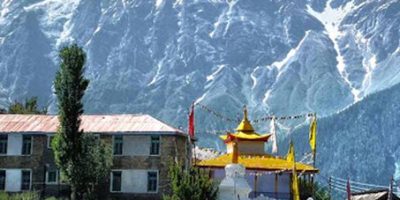Delhi – Shimla – Kaza (791 km) with an overnight stay in Shimla and Reckong Peo you will reach Kaza in 3 days driving about 8-12 hrs a day Delhi – Manali – Kaza (772km) with an overnight stay in Manali you will reach Kaza in about 2 days driving about 16-18 hrs a day
This varies from year to year but in general, if you are coming from Manali, Kunzum La and Rohtang Passes are open around mid-May. Coming from Shimla, the Reckong Peo road is all-weather and the Border Roads Organization do their best to keep this route open all year round. The best time to come to Spiti is the Summer months between May and October when temperatures are perfect, roads are (mostly) clear and the sun is shining!
In terms of personal gear bring whatever you need to comfortably walk in the sun, while having warm clothes for evenings. While it does get cold in Spiti in the spring and autumn(mar/apr and sept/oct) it is usually warm and sunny during the summer months and can get quite hot. In the evenings it can get quite cold though so you should bring at least a warm long sleeve jacket or sweater and a shawl. Always remember the maximum weight your porter will carry is 18kg. For trekking and camping, we always provide tents and sleeping bags, a toilet tent and a kitchen with lights but it is still a good idea to bring a torch or flashlight for evenings. It can be dusty and dry in the high altitude desert so it can be a good idea to bring chapstick or lotion and some extra tissues! You should also be prepared for bright sunshine and bring sunglasses. For medical conditions such as asthma the high altitude can cause mild difficulty breathing– so bring an inhaler. Always remember – if you buy new equipment for your trip it is important to try it out before you bring it on trek!
We provide a range of treks for all levels of traveler. The tour packages are categorized by difficulty level. all levels – these tours are suitable for all age groups and levels of ability. beginner – these tours involve a small degree of walking – no more than 4-5 hours in a day and never far from a warm bed so it can be shortened if need be! intermediate – these tours are for people with prior experience or a high degree of fitness who are ready for a multi-day trek in the Trans Himalayas! advanced – our advanced tours are for experienced mountaineers capable of lengthy treks and climbs to altitudes of 6000m or higher.
For foreign (non-Indian) passport holders: Coming from Manali over the Rohtang Pass requires no Inner Line Permit or paperwork, the border police will register your passport number at the entrance to the valley and it will rarely take longer than 5 minutes. Coming from Shimla does require an Inner Line Permit which can be arranged in advance at the District Collectors office in Shimla or at the Reckong Peo border post. Experienced India travelers always have photocopies of their passports and spare passport photos ready at all times! For Indian citizens: No permits required.
Individuals not used to higher elevation may be at risk of altitude sickness. Symptoms of AMS include- 1. Light Symptoms: Loss of appetite Sleep disturbance Difficult to pass urine 2. Moderate Symptoms: Headache which is bad Irregular breathing Nausea Mild weakness 3. Serious Symptoms: Swelling of hands and face Dizziness Difficulty standing Chest gurgles Zero energy It can be alleviated or avoided by slowing the pace of ascent – for this reason we usually recommend a minimum of 7 days for a tour of the valley, allowing plenty of time to ascend gradually. Should someone in the group still feel unwell there is sufficient time in the itinerary to have a relaxed morning until they feel better! Painkillers and extra fluids can usually reduce the discomfort of altitude sickness but if a guest ever shows persistent symptoms we always descend to a more comfortable altitude to be safe.
Because it is a high altitude desert, the weather in Spiti can be quite extreme with conditions varying from bright, hot sunshine to sudden snow in the higher passes as early as September! In general, though, the summer season (May-Oct) is a perfect time to visit with temperatures rarely exceeding 20-25 centigrade by day and cooling off to a comfortable 18 to 20 by night. During the winter months between November and April, the temperature dips to as low as -12 to -22 degrees centigrade and reaches a maximum of 11 to 13 degrees in the sun. In Summer from May to October the temperature can soar up to 29 degrees in the day and at night, the temperature drops to between 2 and 12 degrees centigrade





